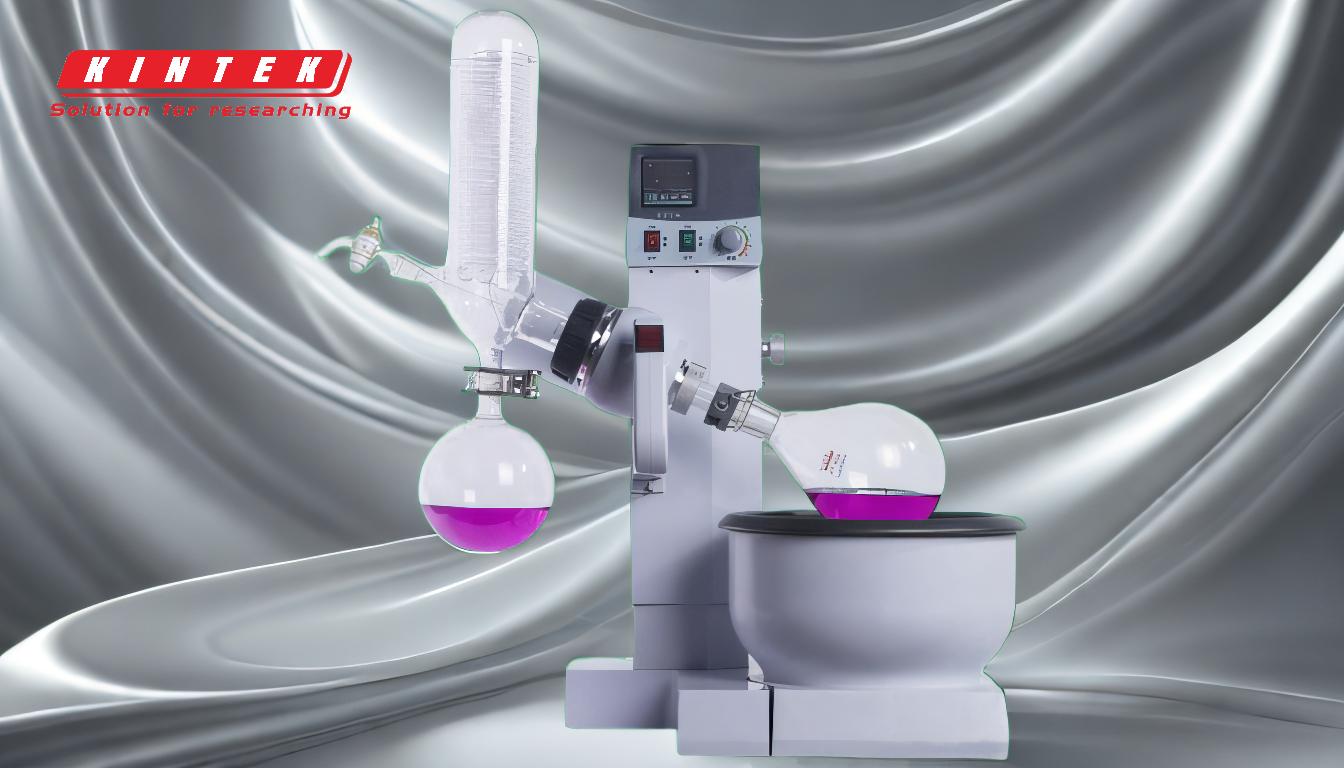Simple distillation is a fundamental technique used to separate components of a liquid mixture based on their boiling points. The materials used in simple distillation equipment are carefully chosen to ensure chemical resistance, durability, and efficiency. The primary materials include borosilicate glass, polytetrafluoroethylene (PTFE), and stainless steel, which are selected for their ability to withstand high temperatures, corrosive substances, and vacuum conditions. The setup typically consists of components such as the boiling flask, condenser, heating mantle, and receiving flasks, all designed to work together seamlessly for effective separation of liquids.
Key Points Explained:

-
Borosilicate Glass:
- Properties: Borosilicate glass, particularly the 3.3 grade, is the most commonly used material in distillation equipment. It is known for its excellent thermal resistance, chemical inertness, and transparency, which allows for easy monitoring of the distillation process.
- Applications: This material is used for the boiling flask, condenser, and receiving flasks. Its ability to withstand rapid temperature changes and resist corrosion from most chemicals makes it ideal for laboratory distillation setups.
-
Polytetrafluoroethylene (PTFE):
- Properties: PTFE is a synthetic fluoropolymer known for its exceptional chemical resistance, low friction, and high-temperature tolerance. It is non-reactive to most chemicals, making it suitable for use in environments where corrosive substances are present.
- Applications: PTFE is often used for seals, gaskets, and tubing in distillation setups. Its non-stick properties also make it useful for components that come into contact with sticky or viscous substances.
-
Stainless Steel (304 Grade):
- Properties: Stainless steel, particularly the 304 grade, is valued for its strength, durability, and resistance to corrosion. It can withstand high temperatures and is less likely to react with the substances being distilled.
- Applications: Stainless steel is commonly used for structural components, such as clamps, supports, and connectors. It is also used in vacuum pumps and other mechanical parts that require robustness and longevity.
-
Heating Mantle:
- Function: The heating mantle is used to uniformly heat the boiling flask, ensuring that the liquid mixture reaches the desired temperature for distillation.
- Material: The heating mantle is typically made of a combination of stainless steel and heat-resistant materials to ensure it can withstand high temperatures without degrading.
-
Condenser:
- Function: The condenser cools the vaporized substances, converting them back into liquid form for collection.
- Material: Condensers are usually made of borosilicate glass, which allows for efficient heat transfer and resistance to thermal shock. Some condensers may also include stainless steel or PTFE components for additional durability.
-
Vacuum Pump and Cold Trap:
- Function: The vacuum pump creates the necessary vacuum conditions for distillation, while the cold trap captures any vapors that escape the condenser, protecting the vacuum system.
- Material: These components are typically made of stainless steel and PTFE to ensure they can operate effectively under vacuum conditions and resist chemical corrosion.
-
Receiving Flasks:
- Function: These flasks collect the separated distillates after they have been condensed.
- Material: Receiving flasks are usually made of borosilicate glass, which is transparent and chemically inert, allowing for easy observation and handling of the collected substances.
In summary, the materials used in simple distillation equipment are selected for their ability to withstand the harsh conditions of the distillation process, including high temperatures, chemical exposure, and vacuum environments. Borosilicate glass, PTFE, and stainless steel are the primary materials, each contributing to the efficiency, durability, and safety of the distillation setup.
Summary Table:
| Component | Material | Properties | Applications |
|---|---|---|---|
| Boiling Flask | Borosilicate Glass | Thermal resistance, chemical inertness, transparency | Used in boiling flask, condenser, and receiving flasks |
| Seals & Gaskets | PTFE | Chemical resistance, low friction, high-temperature tolerance | Used in seals, gaskets, and tubing |
| Structural Components | Stainless Steel (304) | Strength, durability, corrosion resistance | Used in clamps, supports, connectors, and vacuum pumps |
| Heating Mantle | Stainless Steel | Heat-resistant materials for uniform heating | Used to heat the boiling flask |
| Condenser | Borosilicate Glass | Efficient heat transfer, resistance to thermal shock | Cools vaporized substances |
| Vacuum Pump & Trap | Stainless Steel, PTFE | Operates under vacuum, resists chemical corrosion | Creates vacuum conditions and captures escaping vapors |
| Receiving Flasks | Borosilicate Glass | Transparency, chemical inertness | Collects separated distillates |
Optimize your distillation process with high-quality materials—contact our experts today for tailored solutions!










